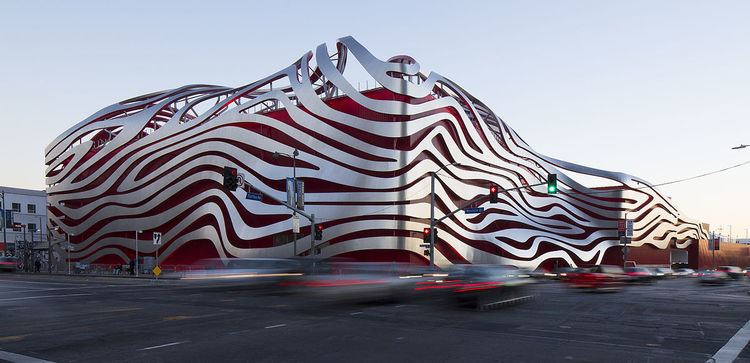Established 1994 Director Terry L. Karges Website www.petersen.org Founded 1994 | Type Automotive museum Curator Leslie Kendall Phone +1 323-930-2277 | |
 | ||
Location 6060 Wilshire BoulevardLos Angeles, CaliforniaUnited States Hours Closed now Monday10AM–6PMTuesday10AM–6PMWednesday10AM–6PMThursday10AM–6PMFriday(Cesar Chavez Day)10AM–6PMHours might differSaturday10AM–6PMSunday10AM–6PMSuggest an edit Similar Skirball Cultural Center, San Diego Automotive Museum, Japanese American National, Southern California Institute o, Art Center College of Design Profiles | ||
Petersen automotive museum vault part 1 car and driver
The Petersen Automotive Museum is located on Wilshire Boulevard along Museum Row in the Miracle Mile neighborhood of Los Angeles. One of the world's largest automotive museums, the Petersen Automotive Museum is a nonprofit organization specializing in automobile history and related educational programs.
Contents
- Petersen automotive museum vault part 1 car and driver
- Petersen automotive museum redesign tour
- History
- Collections
- Finances
- Museum in popular culture
- References
Petersen automotive museum redesign tour
History
Founded on June 11, 1994 by magazine publisher Robert E. Petersen and his wife Margie, the $40-million Petersen Automotive Museum is owned and operated by the Petersen Automotive Museum Foundation. The museum was originally located within the Natural History Museum of Los Angeles County, and later moved to a historic department store designed by Welton Becket. Opened in 1962, the building first served as a short-lived U.S. branch of Seibu Department Stores, before operating as an Ohrbach's department store from 1965 to 1986. Six years after Ohrbach's closed, Robert Petersen selected the largely windowless site as an ideal space for a museum—allowing artifacts to be displayed without harmful exposure to direct sunlight.
In 2015, the museum underwent an extensive $125 million renovation. The building's façade was redesigned by the architectural firm Kohn Pedersen Fox, and features a stainless-steel ribbon assembly made of 100 tons of 14-gauge type 304 steel in 308 sections, 25 supports and 140,000 custom stainless-steel screws. Designers at The Scenic Route configured interior spaces to accommodate changing exhibits that encourage repeated visits. The remodeled museum opened to the public on December 7, 2015.
Collections
The museum has over one-hundred vehicles on display in its twenty-five galleries. The remaining half of the collection is kept in a "vault," located on the basement level of the building. Age restrictions and an admission premium are in effect to view the vault collection. The ground floor focuses on automotive artistry, showcasing an array of extravagant automobiles. The second floor is principally concerned with industrial engineering—including design, performance, and a collection of interactive teaching exhibits. Special displays on the industry floor cover racing, motorcycles, hot rods and customs. The third floor chronicles the history of the automobile with an emphasis on the car culture of Southern California.
Some of the cars and automotive memorabilia in the Petersen exhibits include:
Finances
The museum received a $100-million gift from Margie Petersen and the Margie & Robert E. Petersen Foundation in April 2011, which includes cash and the property the museum was leasing, as well as many of the vehicles belonging to the Petersens.
Museum in popular culture
On March 9, 1997, after a party at the museum, The Notorious B.I.G. got into an SUV with his entourage and drove fifty yards to a red light where he was murdered by an unknown assailant.
Ohrbach's department store is featured in a lengthy sequence in the 1988 film Miracle Mile.
The museum is destroyed in the 1997 film, Volcano.
In a scene from Who Killed the Electric Car? a previous General Motors EV1 owner visits their car in the museum.
